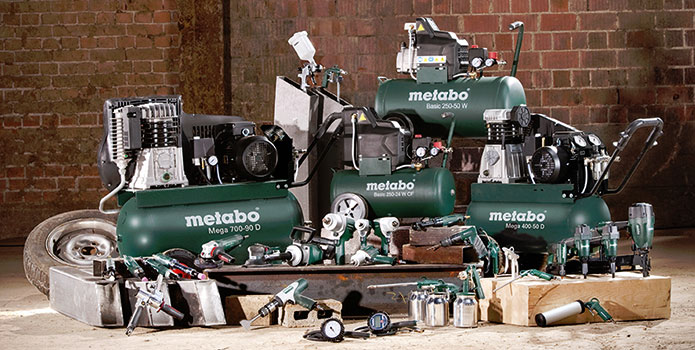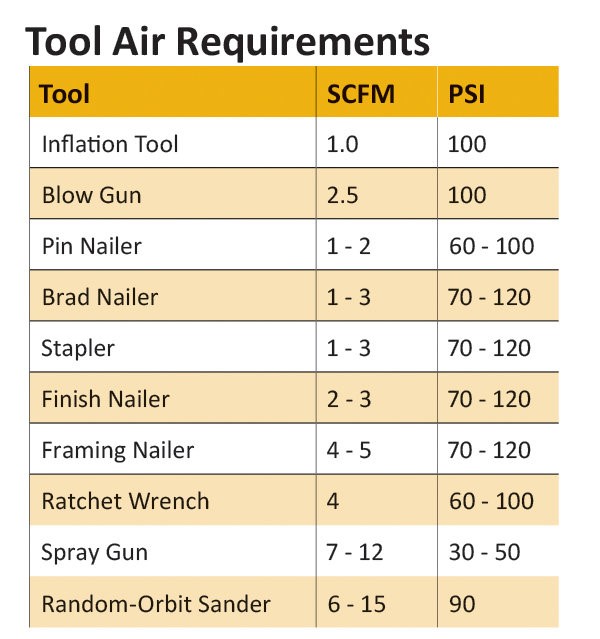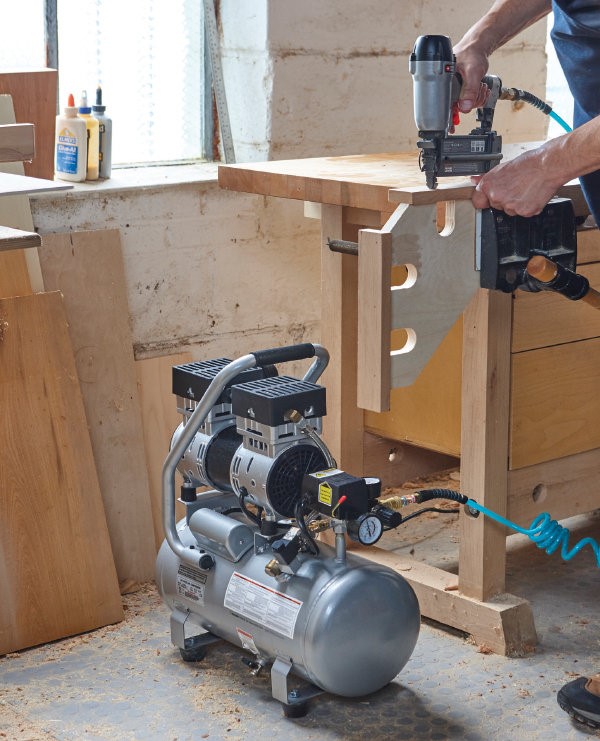Pneumatic Basics: Compressors (Holding Your Breath)
The basic function of an air compressor is to absorb surrounding air and compressing the air which is then stored in the tank and moved through several other components to deliver the optimum force required to use on your tools. This air compression is done by the use of a piston(s) and a specific cylinder arrangement which are powered by an electric motor or engine.

Benefits of using Compressed Air over Electrical Power
Many workshops have adopted the use of air compressors and air tools in their arsenal for their efficiency and cost-effectiveness.
- Air tools do not have internal motors and still deliver the same performance.
- The lack of internal components in air tools makes them lighter and easier to maintain, more durable and longer-lasting. This reduces the costs of repairs and replacements in the workshop.
- In a workshop or factory, one can power several tools simply using a single compressor at a fraction of the electricity cost.
Air tools, however, do tend to be quite noisy as the air exits the exhaust port of the tool.

Factors to consider when choosing an air compressor
When purchasing a compressor one needs to consider what one wants to use the compressor to power and also what kind of environment they wish to use the compressor in.
- The horsepower (HP)of the compressor and size are often the main factor considered when acquiring a compressor.
- The size of air compressors can range anywhere from 25l to 500l and beyond. This size specifies the maximum amount of air which can be held in the tank. One may desire a bigger tank size when powering more than one tool or when using the compressor for extended periods.
- The delivery rate (measured in Cfm) is also important to consider as it must match that of the tool which the compressor will power. Should this not be the case, one will have to wait for the tank to up and for the pressure to rebuild from time-to-time which would greatly affect productivity – especially on tools with longer duty cycles, such as angle grinders.

Important components/accessories for air compressors
Filter is used when protecting the working parts of your tools against water and dust collected from the air. Dust can clog up your tools and fittings whereas the water in the air will eventually cause corrosion inside your tools.
- Regulators
These act like valves and control the amount of air pressure which is channeled through. This can be adjusted up or down according to your current function and the requirements of the tool used.
In longer duty cycles, a lubricator is necessary to keep your tool running smoothly by lubricating the tool with tiny droplets of oil flowing in the airflow.
When using lubricators, filters, and regulator one needs to have two hoses. One connecting to these components and the other connecting to the power tool These hoses can be made of rubber or plastic, the former being more flexible and at times more durable. A long hose will decrease the amount of pressure power delivered to your tool, this is the same with a hose which has a smaller diameter.
Maintenance of air compressor and tools
One can maintain their compressor by simply:
- Checking the oil levels regularly and change the oil at the required intervals supplied by the manufacturer.
- Regularly draining the water accumulated in the compressor. This water occurs naturally as the air is compressed.
- Lubricating tools before use by adding oil in the inside of the tool or by simply using a lubricator as mentioned above.

Tools4Buildersare able to accommodate any request related to an associated product. Please browse through our online catalogue.

Comments
Add comment